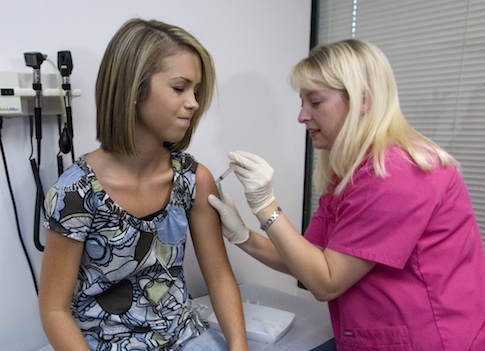Millions of young people could save hundreds of dollars a year by avoiding Obamacare’s insurance exchanges and paying the penalty, a new report examining the law’s financial incentives finds.
About 3.7 million people between the 18 and 34 years old will save at least over $500 next year if they do not buy health insurance through the exchanges, according to the study by National Center for Public Policy Research health care policy analyst David Hogberg. Of those, just over 3 million will save over $1,000 per year.
While the law has put in place two primary incentives to encourage people to buy insurance—subsidies and the individual mandate—these are not enough to make the subsidies economically worthwhile for many young people, Hogberg contends.
The report highlights a weakness with the structure of the Obamacare exchanges. If the exchanges are unable to attract enough younger people, the insurance pool will shrink and the premiums will rise, setting off a "death spiral" and potentially leading to a collapse of the exchanges.
"You need enough of these [young] people in the exchanges to in effect cross-subsidize people who are older and sicker," Hogberg said in an interview with the Free Beacon.
The financial incentive to avoid the exchanges will be even greater in 2014 because the penalty for not buying insurance will be higher in subsequent years, the report said. The penalty in 2014 will be either $95 or one percent of one’s income, whichever is greater. This penalty will rise to $695 or 2.5 percent by 2016.
While the "Affordable Care Act" was originally designed to make health insurance more affordable, even those close to the poverty line can save over $500 by not buying insurance in 2014, the report noted. The $500 savings for an 18 year old starts at 163 percent of the poverty line and for a 30 year old at 178 percent. In 2016 the level will rise to closer to 300 percent.
There will be some people for whom buying insurance will be economically rational, Hogberg explained, but not many.
"For some people the subsidy will cover most of the cost of a bronze plan, and even when it doesn’t cover the full cost, it may cover enough so that forgoing the insurance and paying the fine is not the rational way to go," he said.
While some parts of the bill encourage people to buy insurance, others actually discourage purchasing insurance, Hogberg noted.
"Community rating," where people are charged the same regardless of age or health condition, and "guaranteed issue," which requires insurance companies to sell insurance to anybody, both work against encouraging people to enroll now. Community rating drives up the price of insurance for young and healthy people, while guaranteed issue means that a person can wait to buy insurance until they get sick.
Obamacare modified pure community rating, allowing some variation for age and smoking status, but it still increases the price of insurance for younger people, Hogberg said.
The report comes as many states have been releasing data in recent weeks showing significantly higher premiums for plans offered on the exchanges. Indiana, Georgia, South Carolina, and Ohio are all predicting that insurance premiums will increase.
The Obama administration is running an election-style outreach campaign to encourage people, especially young people, to sign up for insurance on the exchanges.
People will be able to sign up for insurance beginning Oct. 1. The plans will begin coverage on Jan. 1, 2014.
